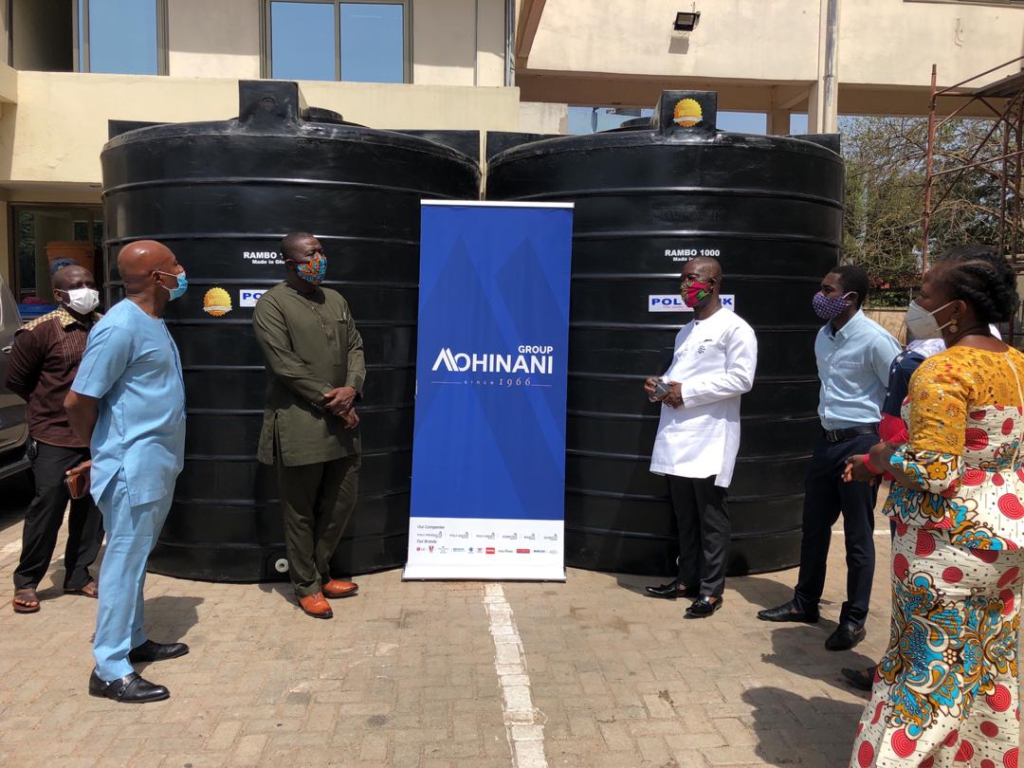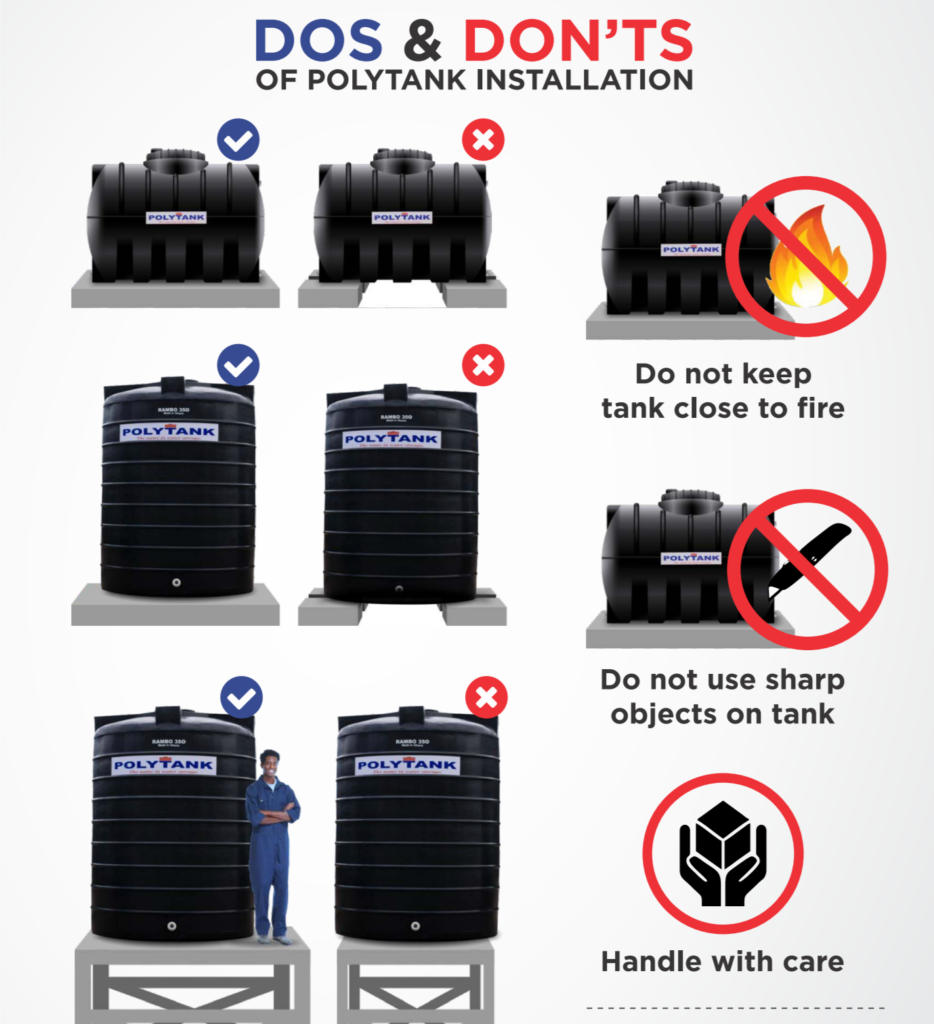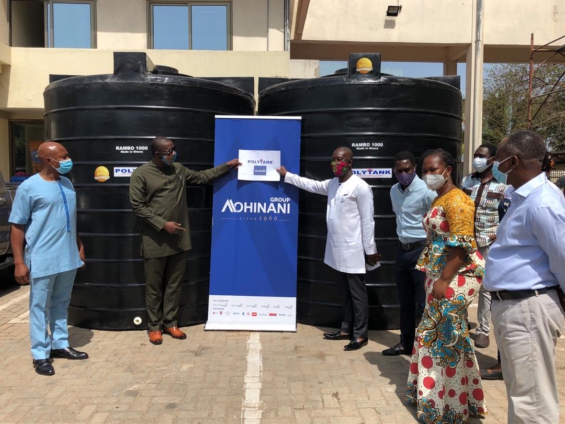The Mohinani Group, who are producers of a popular water storage facility, Polytank has taken time to educate the public on some dos and don't's of the product so they don't lose water.
Many parts of the capital for instance is experiencing water shortage as a result of what the Ghana Water Company Limited says is human activities.
To forestall this, the group says it is important to understand the correct maintenance that the water tank requires for it to function to its optimal level.
"Maintaining a water tank is not difficult as long as you follow the manufacturer’s recommended guidelines," it said outlining the do's and don't's.

Water Tank Installation
Correct preparation is essential to ensure a long and trouble-free life for your water tank. Water tanks are the most cost-effective means of keeping drinking water clean, safe and in adequate supply. They are strongly built but it is nonetheless important to have them installed properly. For a product like Polytank, installation and maintenance will go a long way to ensure its longevity. As a result, it is critical to note the following while installing your polytank:
- Always maintain/install your polytank on a flat level compacted base or a concrete flat surface commonly known as a “platform”. Avoid using uneven surfaces such as cement blocks, bricks or plastic stands.
- When using metal stands, ensure that the poles are strong enough to carry the weight of your installed Polytank.
- Only keep small capacity size water tank from 200 liters to 2,000 liters on a high-rise surface with a strong base or metal stand.
- Do not keep your Polytank close to fire or use sharp objects such as knives, scissors, machetes etc. on your Polytank.
- Seek the services of a Professional/Certified Plumber in installing your Polytank and read the installation instructions pasted on the Polytank properly.

Regular Tank Inspection Checklist
It is important to inspect your polytank by screening on a regular 6 month basis. Here is a list of areas that you should inspect:
- Tank and tank roof – check the total structure of the tank including the roof and access cover. Any holes or gaps should obviously be repaired. Check for the presence of accumulated debris, leaves, droppings, dead insects and the likes. Any unwanted material should be cleared. If you feel your roof needs a clean, ensure that your polytank is disconnected from the water flow and covered.
- Inflow and overflow screens – ensure you screen around your tank and ensure accessories are properly cleaned, secured and unbroken. These prevent mosquitoes, frogs and vermin from entering your tank. If broken, repair if necessary and also inspect inside your tank.
- Internal inspection – Identify and ensure all access points are properly sealed and light entry is fully blocked. Check for and remove any built up leaves and debris. Remove water and any blockages from first flush device as necessary.
- Tank fittings, pump, mains switch and pipes – During inspection ensure they are in full working order and that they do not need repairs. Finally, be sure to disconnect your tank whenever cleaning!
Latest Stories
-
Nominee for agriculture secretary completes Trump cabinet
1 min -
Betway Africa offers a once-in-a-lifetime ‘Play-on-the-Pitch’ experience at Emirates Stadium
51 mins -
The rise and fall of Matt Gaetz in 8 wild days
53 mins -
School Feeding Programme: Bono East NIB seizes smuggled rice, arrest driver
1 hour -
Dr. Razak Opoku: Despite challenges, facts and data still prove NPP is better manager of the economy than NDC
1 hour -
Seidu Agongo: On December 7, it must be peace over power
1 hour -
2024 Election will take place on December 7; ignore misleading claims – EC
1 hour -
GPL 2024/25: Asante Kotoko bounce back with win over Aduana FC
2 hours -
GPL 2024/25: Gold Stars beat Vision FC to retain top spot
3 hours -
Ebo Whyte returns with ‘The 4Play’
3 hours -
2024/25 Ghana League: Heart of Lions sink Legon Cities to go third
4 hours -
Bright Simons: DBG, Ghana’s top development bank, goes for the jugular
4 hours -
Governance and Entrepreneurship consultant demands global support for Africa’s young farmers
4 hours -
Ghanaians reminded to prioritise regular health check-ups
4 hours -
Salah brace sends Liverpool 8 points clear
4 hours

